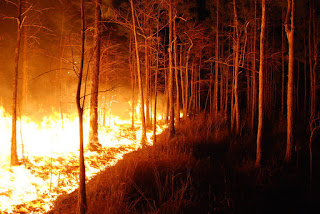Wildfire Safety: Preparing for Disasters
By: Ted Richards
Stander Reubens Thomas Kinsey
Stander Reubens Thomas Kinsey
With over one million acres of land destroyed, this has been one of the worst years in California history for wildfires. Given the ongoing drought and its effect on California forests, the prognosis for future years is discouraging. In light of this, what can the public and employers do to reduce the risk of harm from wildfires and their consequences?
An informed response to the dangers posed by wildfires begins with preparation. There are many ways to prepare: plan ahead, sign up for your community’s warning system, know your community’s evacuation plan and multiple ways to leave the area. You should not wait until a wildfire threatens to prepare your response. Installing smoke detectors and fire extinguishers and ensuring they are working are some of the more obvious preventive measures. You should also identify adequate sources of water nearby and make sure you have a hose that can reach your entire property. Develop a disaster preparedness plan that includes a survival kit, which should include N95 respirator masks, and an evacuation plan. Inside your home and place of business, you should designate a room that can be closed off from outside air, have a portable air cleaner that can keep indoor pollution levels down, and maintain a battery-powered radio so that you have access to current information in the event of a power outage. Additionally, make sure flashlights are accessible and batteries are functioning. Even with all of these measures in place, you should keep yourself and your employees updated and informed about the plan, and create opportunities to practice its implementation.
If your business is in an area where its structure could be reached by wildfire, ensure that a vegetation-free or vegetation-reduced zone is created around buildings. The size of the zone depends upon the level of risk posed by wildfire to your business location. You should also remove vines from walls, move landscaping away from building exteriors, and clear debris such as needles, leaves and branches. Make sure to remove highly flammable and low-branched trees, or trim branches to a safe height above the ground. Consider longer-term structural measures as well, such as replacing wooden decks and patios with fire resistant materials, and replacing combustible roofing.
Stay updated and on top of the news to protect yourself, as well as your family, colleagues, and employees. Be aware of warnings and updates issued by government agencies, local news, and emergency channels. Move emergency supplies and must-have items to vehicles to facilitate quick evacuation if necessary, and evacuate immediately if told to do so. If there is time prior to evacuation, move furniture to the center of rooms, close windows and doors, shut off natural gas at its source, and turn off lights so fire fighters can see more easily through smoke.
If the danger is smoke rather than fire, you should stay inside in a safe location and avoid outside activity if possible. Use masks and respirators as necessary, close all windows and doors, and go where air conditioning is available in order to avoid breathing particulates. Be aware of the needs of those with asthma and other respiratory conditions, and where possible confirm that those who require medications have them available.
If you are in a vehicle, you should drive with your windows up and air vents closed, as well as set the air in your car to “re-circulate” mode. If you let outside smoke in your car, the temperature will rise and sparks could enter in addition to smoke. You should also turn on your headlights and keep your doors unlocked in case you need to be rescued from a vehicle. Even with a planned escape route, you should follow routes dictated by local officials, as wildfires can quickly change directions and your planned route may be blocked. If you have to stop, turn the engine off but leave the headlights on, move to the floor, and cover up with a blanket. If you are outside in the open, look for an area with less fuel (i.e. vegetation and dry materials), making sure to avoid canyons. If you are close to a road, lie in a ditch and cover yourself with something protective against heat. Of course, call 911 if possible.
Safety practices are just as important in the aftermath of a wildfire. Employees should not return to work until officials declare that it can be done safely, and all ash pits or hot spots near the place of business should have been extinguished. Preparation, awareness, and communication are all keys to avoiding unnecessary danger in the face of fire season. Below are links to more helpful information and resources:
https://www.statefarm.com/simple-insights/safety/wildfire-safety-tipshttp://www.baaqmd.gov/about-air-quality/incidents-and-advisories/wildfire-safetyhttps://www.thehartford.com/claims/wildfire-safetyhttps://www.ready.gov/wildfireshttps://www.nationwide.com/wildfire-safety.jsp


Comments
Post a Comment